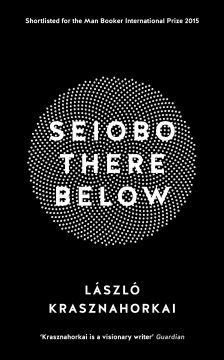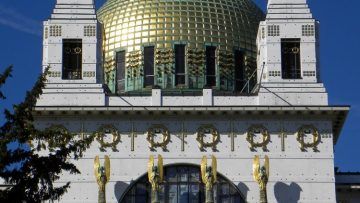by Andrea Scrima
 The stories in Seiobo There Below, if they can be called stories, begin with a bird, a snow-white heron that stands motionless in the shallow waters of the Kamo River in Kyoto with the world whirling noisily around it. Like the center of a vortex, the eye in a storm of unceasing, clamorous activity, it holds its curved neck still, impervious to the cars and buses and bicycles rushing past on the surrounding banks, an embodiment of grace and fortitude of concentration as it spies the water below and waits for its prey. We’ve only just begun reading this collection, and already László Krasznahorkai’s haunting prose has submerged us in the great panta rhei of life—Heraclitus’s aphorism that everything flows in a state of continuous change.
The stories in Seiobo There Below, if they can be called stories, begin with a bird, a snow-white heron that stands motionless in the shallow waters of the Kamo River in Kyoto with the world whirling noisily around it. Like the center of a vortex, the eye in a storm of unceasing, clamorous activity, it holds its curved neck still, impervious to the cars and buses and bicycles rushing past on the surrounding banks, an embodiment of grace and fortitude of concentration as it spies the water below and waits for its prey. We’ve only just begun reading this collection, and already László Krasznahorkai’s haunting prose has submerged us in the great panta rhei of life—Heraclitus’s aphorism that everything flows in a state of continuous change.
But the chapters of Seiobo There Below are not really independent stories; rather, they form a precisely composed sequence of illuminated moments that are interconnected in many complex ways. Of these, “Kamo-Hunter” is the only one that does not describe a process of artistic creation, but a bird’s (and by implication the narrator’s) power of focus, the heightened state of awareness necessary to stem itself against the wind and resist the pull of the current to remain perfectly still until the moment arrives to snatch up its prey. And suddenly it’s less a matter of the ceaseless movement of all things, but of absolute composure, a deepest possible being in the present tense, a kind of timelessness in which the moment and eternity conjoin to create a brief flash of transcendence. It is about “one time, immeasurable in its passing, and yet beyond all doubt extant, one time proceeding neither forward nor backwards, but just swirling and moving nowhere.” This, in short, is the nature of the concentration required to create art—and what makes “Kamo-Hunter” such a cogent opening to this novel. Read more »

